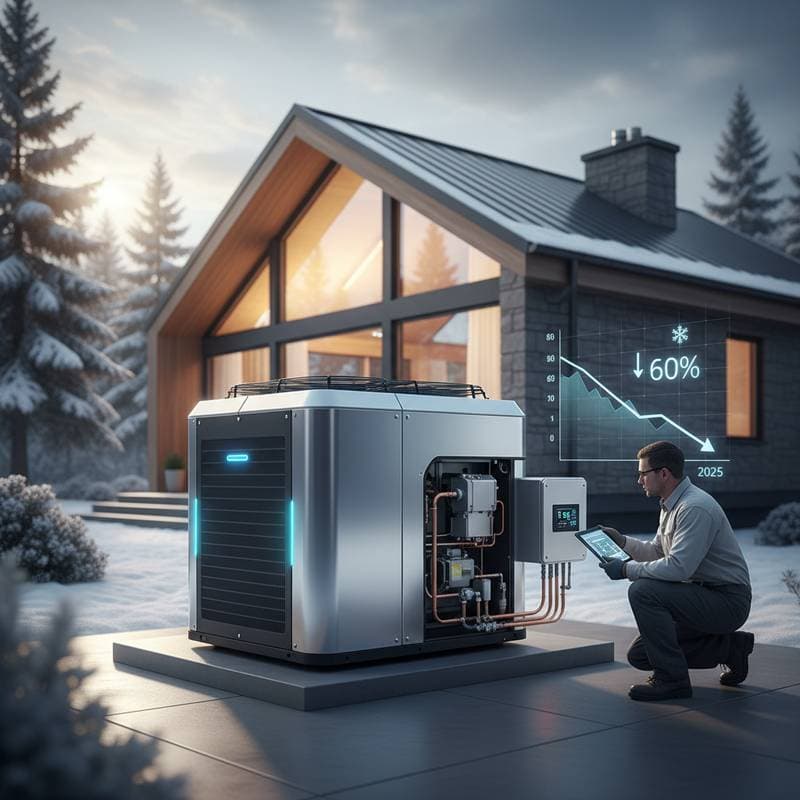Achieve Optimal Comfort with 2025 Dehumidification HVAC Systems
Homeowners in humid climates often face persistent dampness indoors, even after the air conditioner operates continuously. This clammy sensation arises because standard cooling systems prioritize temperature reduction over moisture removal, leaving air feeling heavy and promoting issues like mold proliferation, structural damage to wood elements, and unpleasant odors. Fortunately, 2025 dehumidification HVAC innovations address these challenges directly, enabling precise management of both temperature and humidity for a healthier living environment.
Professionals in the HVAC industry emphasize that genuine comfort requires balanced indoor conditions that support clear breathing and sustained well-being. For those enduring ongoing moisture battles, integrating modern dehumidification technology offers a reliable path to enhanced home comfort and longevity.
Innovations in Dehumidification HVAC Technology
Contemporary dehumidification HVAC systems surpass conventional designs by incorporating sophisticated components such as real-time humidity sensors, variable-speed compressors, and intelligent moisture regulation algorithms. These elements continuously assess indoor conditions and fine-tune operations, including airflow rates, fan velocities, and refrigerant distribution, to sustain optimal humidity levels without excessive cooling.
Experts advise selecting units equipped with integrated humidity modules or standalone whole-home dehumidifiers that complement existing air handlers or heat pumps. Such setups efficiently extract excess moisture while preserving desired temperatures, yielding consistent comfort, reduced energy consumption, and superior air purity.
Key Features Distinguishing Modern Systems
-
Variable-Speed Compressors
These components operate at adjustable capacities rather than fixed high outputs. By extending run times at reduced speeds, they enhance moisture condensation and extraction during each cycle, minimizing energy spikes. -
Integrated Smart Thermostats
Equipped with dual sensors for temperature and relative humidity, these devices enable automated adjustments that basic models overlook, ensuring proactive moisture control. -
Independent Dehumidification Functions
Select systems feature modes that activate dehumidification separately from cooling, targeting specific humidity thresholds to maintain equilibrium regardless of outdoor conditions. -
Enhanced Energy Performance
By avoiding unnecessary overcooling, these systems lower overall power usage. Users frequently observe reductions in electricity costs ranging from 10 to 20 percent following installation of humidity-focused upgrades.
Evaluating Costs, Efficiency, and Returns on Investment
Upgrading to dehumidification HVAC represents a strategic investment with tangible long-term advantages. Installation of a dedicated whole-home dehumidifier typically falls between $1,500 and $3,000, while comprehensive HVAC systems with embedded humidity features range from $6,000 to $12,000, influenced by unit size, efficiency ratings, and manufacturer specifications.
The financial and practical benefits accumulate rapidly:
- Energy Cost Reductions: Effective humidity management decreases reliance on intensive cooling, potentially trimming electricity expenses by up to 20 percent.
- Decreased Maintenance Needs: Stable moisture levels inhibit internal corrosion and component degradation, leading to fewer repair interventions.
- Superior Indoor Air Standards: Controlling dampness curbs the development of mold spores and dust mite populations, thereby alleviating common allergens.
- Structural Integrity Preservation: Consistent humidity safeguards wooden flooring, cabinetry, and wall materials from warping or deterioration.
Industry veterans report that clients adopting these technologies enjoy sustained satisfaction, diminished service requirements, and elevated property values over time.
Practical Strategies for System Longevity
Maintaining dehumidification HVAC equipment ensures peak performance and extends operational life. Homeowners can implement these steps to optimize functionality:
-
Maintain Clean Air Filters
Exchange filters at intervals of one to three months. Obstructed filters impede airflow, compromising the system's ability to remove moisture effectively. -
Conduct Regular Coil Inspections
Accumulated debris on evaporator coils retains moisture and fosters bacterial buildup. Gently remove dirt with a soft brush, or engage a certified technician for thorough servicing. -
Track Humidity Fluctuations
Employ a digital hygrometer for routine monitoring. Sudden increases may signal hidden leaks or inadequate ventilation, warranting prompt investigation. -
Verify Condensate Drainage
Test the drain line by introducing a cup of water into the collection pan. Ensure unobstructed flow to prevent backups that could damage the unit. -
Arrange Professional Servicing
Annual tune-ups, timed before peak seasonal demands, calibrate sensors, clear pathways, and identify potential faults early.
Common Queries on Dehumidification HVAC
How can I determine if my current HVAC includes humidity regulation?
Review the thermostat interface. Presence of humidity readouts or dedicated dehumidification settings indicates integrated capabilities.
Will a standalone portable dehumidifier address humidity across an entire residence?
These devices suit localized areas such as basements or single rooms but lack the capacity for uniform whole-home treatment. Integrated ducted systems provide comprehensive coverage and efficiency.
What is the recommended servicing frequency for dehumidification equipment?
Plan for biannual professional inspections, aligned with transitions to cooling and heating periods, to uphold sensor precision and operational reliability.
What target humidity range promotes optimal comfort?
Aim for 40 to 55 percent relative humidity indoors. This balance discourages microbial growth while supporting respiratory ease and skin health.
Do the expenses of dehumidification enhancements justify the investment?
Affirmative. Through energy efficiencies, comfort improvements, and mitigation of moisture-related damages, returns often materialize within three to five years.
Realize Lasting Home Comfort Through Humidity Mastery
Embracing 2025 dehumidification HVAC advancements transforms indoor environments from damp and uncomfortable to refreshingly balanced. These systems not only elevate daily living experiences but also safeguard health and property value against humidity's hidden threats. Consult a qualified HVAC specialist to assess your needs and initiate the shift toward enduring, efficient comfort today.



